Getting a bird's eye view
There is a very good chance that you (or your friend) have a forced perspective illusion photo somewhere in your collection. You know the ones: perhaps you’re holding up the leaning tower of Pisa or looming like a menacing giant about to eat someone else who seems unnaturally tiny.
By playing with the positioning and distancing of objects, these create an optical illusion where things appear bigger or smaller than reality—even though we know it’s not real.
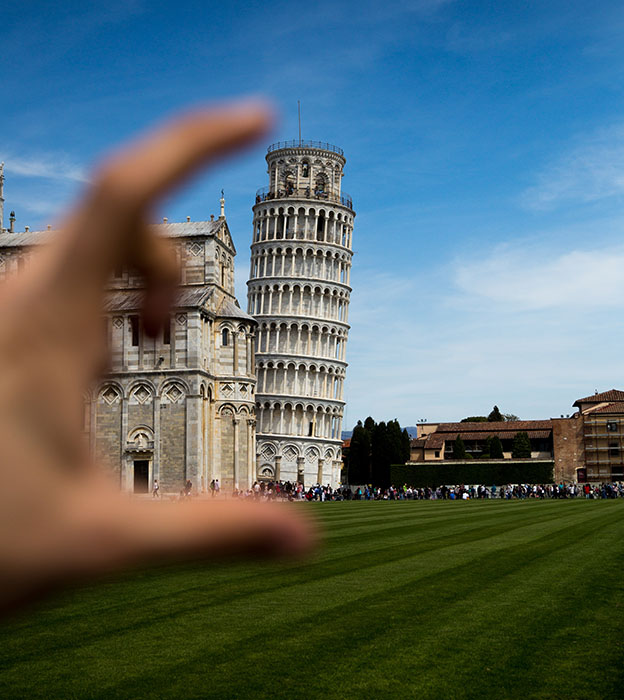
As it turns out, humans are not the only ones enjoying this kind of visual trickery. Great bowerbirds (Chlamydera nuchalis) make these forced perspective illusions, too.
Bowerbirds are known for using objects as part of their strategy to attract a potential mate. Males seek out pebbles, sticks, shells, fruits, leaves, even human-made things like plastic bottle tops to build a bower, or a structure in which he can show off to attract a female.
Styles vary between different bowerbird species; perhaps one of the best-known examples is satin bowerbirds (Ptilonorhynchus violaceus) and their preference for brightly-coloured blue objects.
But for great bowerbirds, it’s more a matter of perspective. The male builds a one-metre long tunnel-like avenue of sticks, with a space called a ‘court’ at each end. If a female spots an attractive-looking bower, she will approach it and sit inside the avenue, while the male stays in his court at the end. Then he puts on a show, holding colourful objects in his beak and bobbing his head up and down.
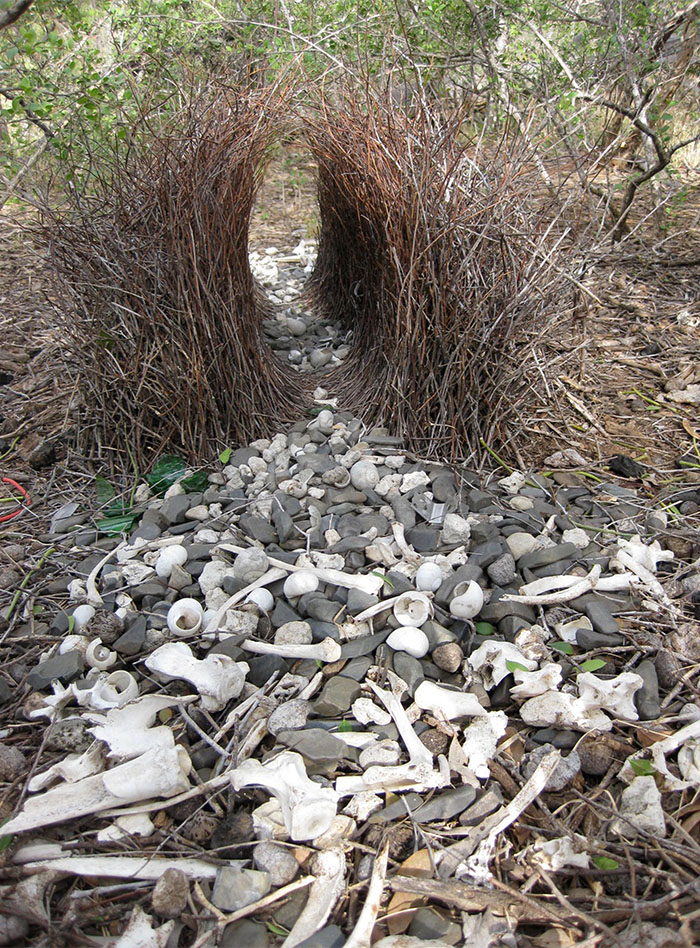
The male bowerbird knows a few clever tactics to make himself look even more impressive. “He puts smaller stones closer to the female, with larger ones in a gradient going away from her,” explains evolutionary biologist and sensory ecologist Professor John Endler. “The effect of that is to make a really even colour pattern, and it’s also going to play tricks on her perception of how big the male is and how big the objects he’s displaying are.” The male will appear larger in comparison if the female perceives all those objects to be the same size (when in reality, they’re not.)
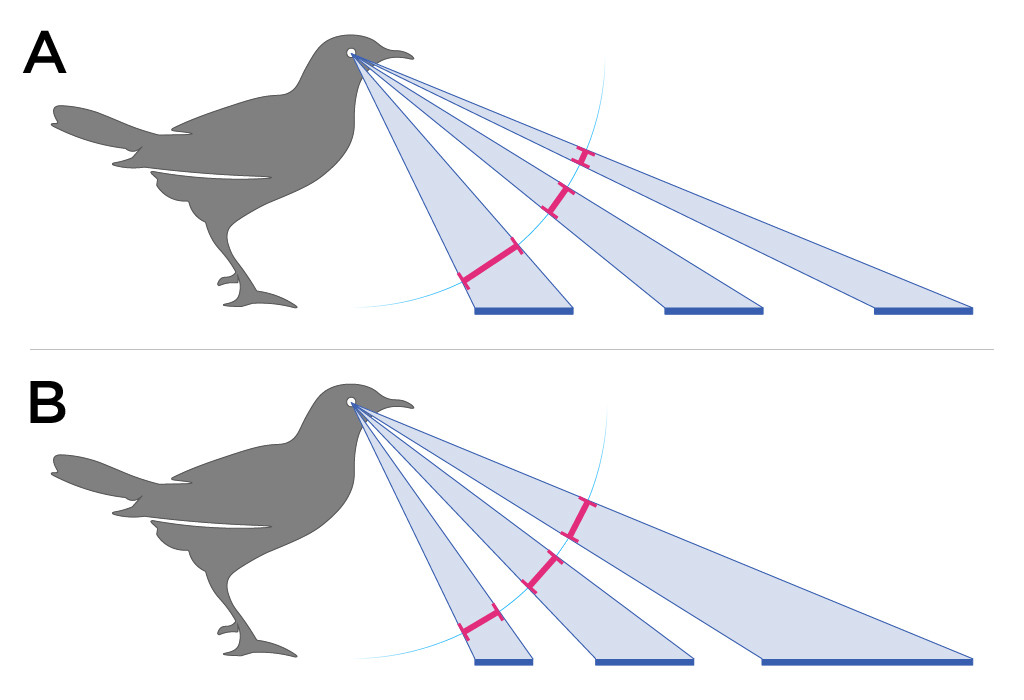
What goes on in a bird brain?
Endler says that studying this bower-building behaviour has been one of the highlights of his scientific career. His path to studying animal vision was initially triggered, he says, by “pure curiosity”.
“I was curious about the why, rather than just the usual who, what, where and how,” he says. “What are the animals trying to do, and why? That’s a very fruitful way of generating new hypotheses.”
He has pioneered the scientific field of sensory ecology: developing a better understanding of how animals perceive the world to understand how they interact with it. Most of his work has centred around fish (mostly guppies) and several bird species, including parrots and bowerbirds, figuring out how they perceive their environments and how that might shape their evolutionary paths, or vice versa.
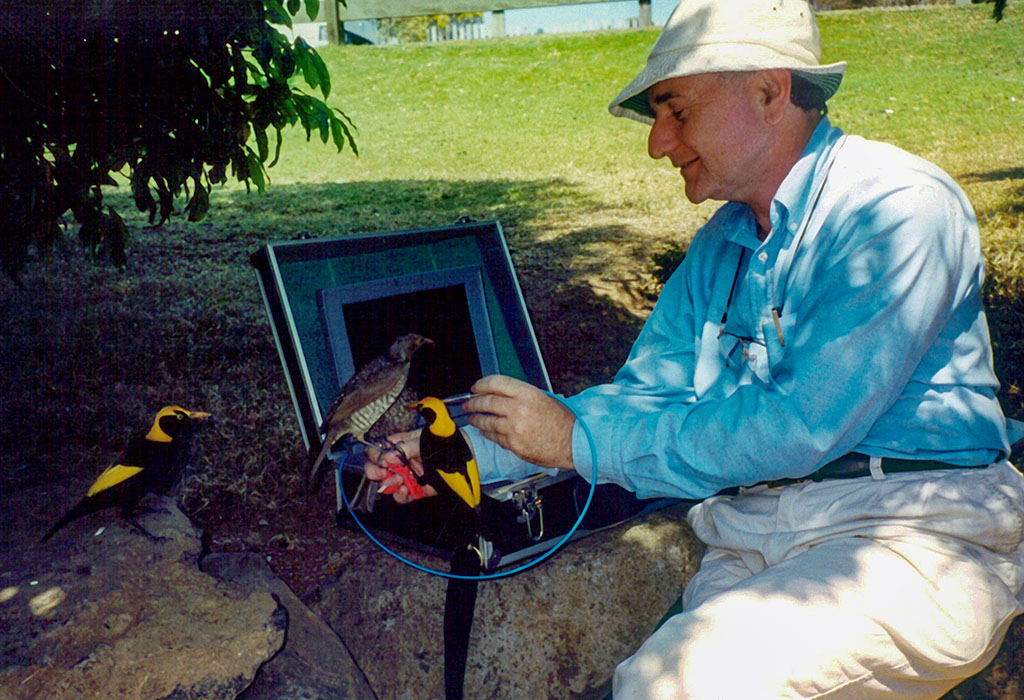
So why are male great bowerbirds such clever architects? We know that males with better-designed bowers successfully attract more mates, but does that make them better fathers, do they have better genes—or is it all purely for show?
To answer those questions, researchers would need to compare the adult males with the offspring they father. That means tracking down the female’s nest, and while it’s easy to spot a bower, finding the nest is a different story.
“They’re almost impossible to find!” says Endler. “The bowers have nothing to do with the nests. The female could have a nest up to a kilometre away from the bower. And the nest is way up high in a tree. People who have spent their entire careers just on birds have difficulty finding the nest.”
Although we can’t directly study whether good bower-builders have better genes, there are other ways to interpret how their behaviour might make sense in evolutionary terms. “They’re showing their ability to collect fruit,” Endler explains. “They’ll only put fruits on their bower at a certain stage of ripeness, so they’re showing their ability to collect fruits at the right stage of ripeness, which suggests they may be generally better at foraging.”
This ability to tell ripe from unripe fruit also reflects differences in how birds perceive colour “infinitely better” compared to humans. Almost all bird species can see ultraviolet light, which is outside the range that humans are able to detect. That not only enables them to see a larger range of colours than we can (at least for bird species that are active during the daytime), but it means they are better able to distinguish different shades more easily.
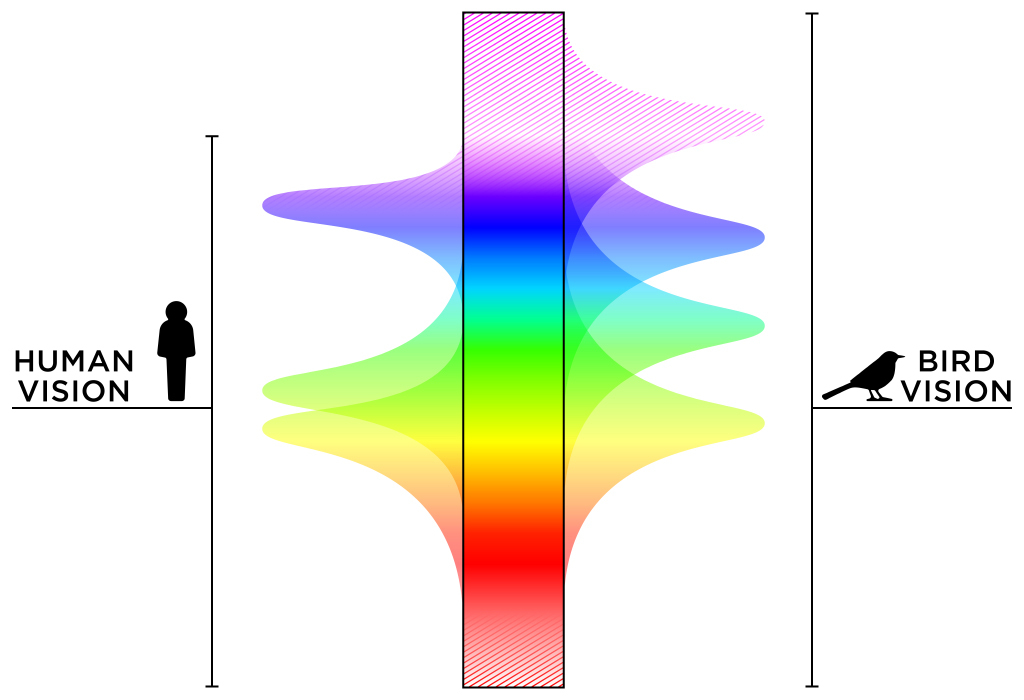
The how and why of colour perception
Colour perception can be studied directly by examining the structure of the light-sensing cells (photoreceptors) in a bird’s eye. All animals have two basic types of photoreceptor cells in their eyes’ retinas: rods are important for being able to see in low light conditions, while cone cells are highly sensitive to colour (but not in dark conditions). Different cone cells will absorb light at different wavelengths, which researchers can measure directly in a lab.
But detecting light is simply a process of gathering data and sending it to the brain for processing. It doesn’t tell researchers anything about how an individual perceives their world, or how they might behave based on the visual information from their environment.
Humans can relay this information by simply describing to researchers what they perceive. Testing perception in animals requires researchers to get a little more creative so they can link perception to an observable behaviour.
For example, Endler and his colleagues developed a novel way to test the colour perception of triggerfish (Rhinecanthus aculeatus) that was inspired by a common test for human colour vision deficiency (colour blindness), called the Ishihara test. Humans with typical colour vision are able to recognise an object—a number—amongst a pattern of dots with varying sizes, because they can differentiate between the shades. Someone with red-green colour vision deficiency, however, will just see a bunch of dots.
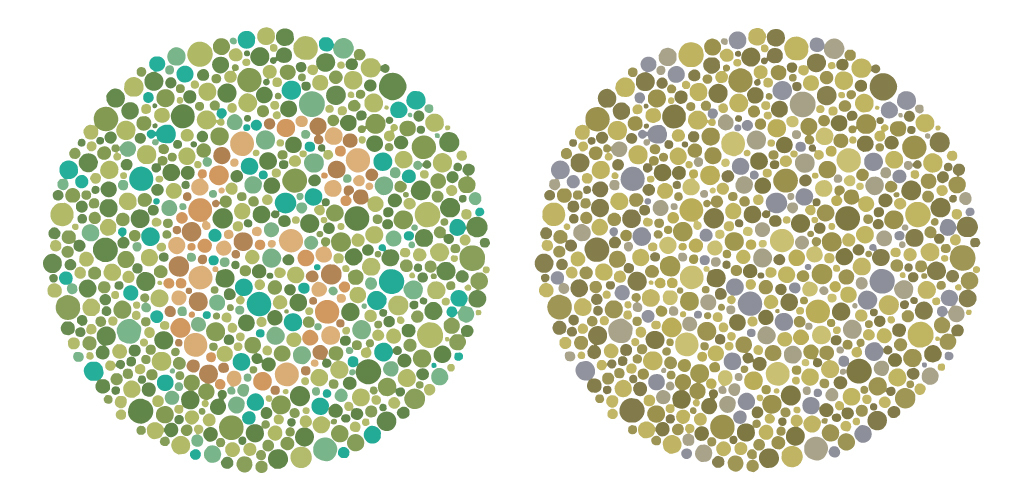
By training triggerfish to associate a differently-coloured ‘distractor dot’ with a food reward, researchers are able to understand how triggerfish perceive colour: if the fish can’t tell the difference between the dots, it won’t know where to look for food, giving researchers an easy way to observe differences in behaviour. “It worked wonderfully,” Endler says. Similar principles apply when designing studies to test bird perception so that researchers can link visual stimuli to observable behaviours.
Of course, that also relies on the researchers themselves knowing what they should observe in the first place. Are there other animals like great bowerbirds that construct visual perception illusions?
Endler says it is possible, but we don’t yet know what to look for in other species that don’t construct display grounds. Strengthening our understanding of animal behaviour is the first step. “The more you know about the animals you’re observing, the easier it is to ask insightful questions,” he says. “It’s important to get out there and watch animals and plants, and ask questions about what they’re trying to achieve, and generate hypotheses that way.”





